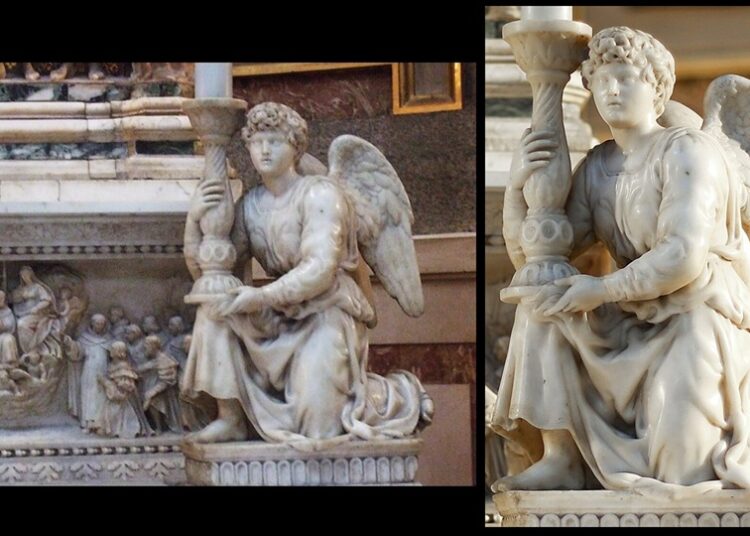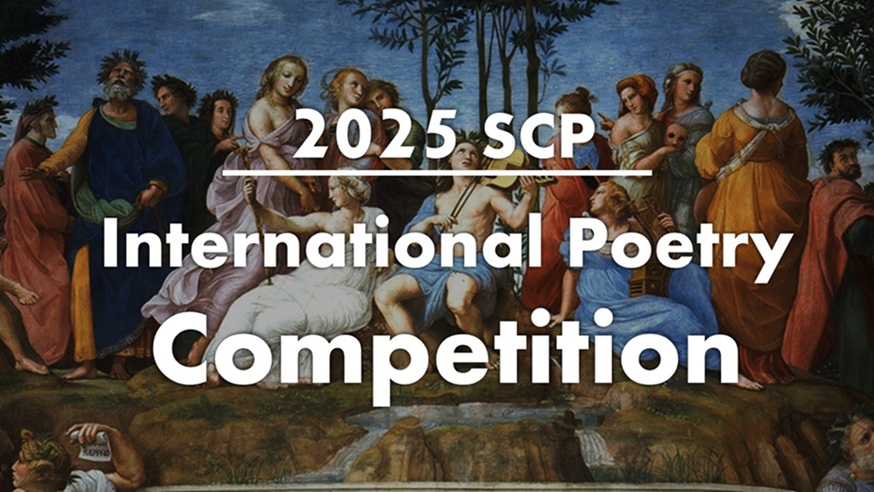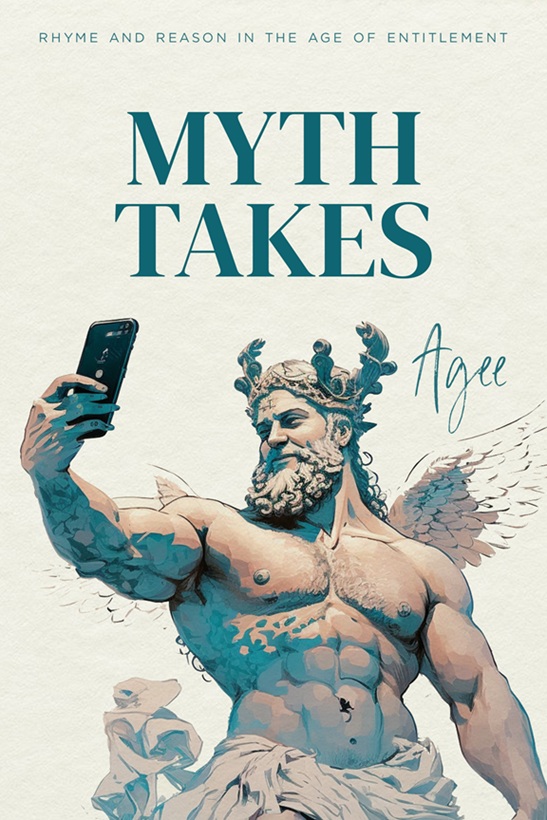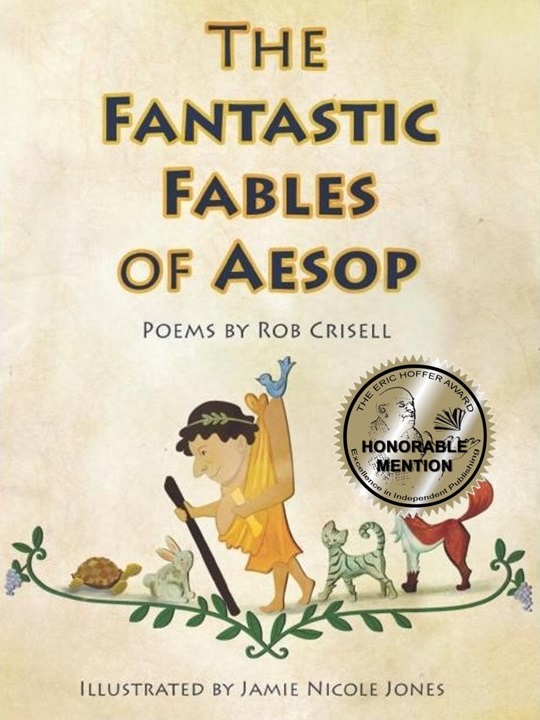Angel
I saw the angel in the marble and carved until I set [him] free.
—Michelangelo (attributed)
One wonders what an angel does all day.
Just sit there, wings slack, staring into space?
But that assumes space-time is where she’ll stay.
A comrade of the host that fell from grace?
In heaven, no work needed, would she pace?
At least that’s movement—maybe hum and pray?
Is there a glass so she can glimpse her face?
Like every other, or unique, each day?
If brought to life, abstraction might convey
Perfection she embodies. Hands embrace
Symbolic spirit’s need Art must obey.
What’s undisturbed and solid, tools erase
To grace her goddess beauty honed to stone
Displayed—from which the angel’s soul has flown.
Spirit Dance
The Great One casts spell-binding nets with hands
That swarm spring’s lusty bees down clovered hills
While black bears raid their hives in shady stands
Of elms that edge the field the farmer tills.
Down here where winter’s high ridge snowfall spills
In the Ohio, one flint arrowhead
Has flushed from silt and pilings of the mills
That once ground corn, until some shot Confed
Set fire, and from his ashy bones the lead
Was scavenged, hammered into arrow tips
That killed the farmer’s ancestor whose dread
Made warrior chiefs press burnt sage to their lips.
This arrowhead’s evolving history
In hand, here, now, embodies mystery.
Beth Houston has taught writing at ten universities and colleges in California and Florida. She has published a couple hundred poems in dozens of literary journals. She edits the Extreme formal poetry anthologies. www.bethhouston.com


















Beth, your two poems were on subjects I love and beautifully written. I have a whole book of poems about angels and have published a couple of them on SCP. When I was young, my grandfather often took me hunting for arrowheads in South Dakota. Your poem musing about angels with spare time was creative and enchanting. Your arrowhead poem had a unique history behind it and made me wonder if you remembered a time on what I assume was the Ohio River.
This is arcanum at its best. Nothing quite fits, but everything fits, and we end up with a firm impression. These are masterclass poems, and not trifles passed around by indifferent waitrons. Their spirit is Dakotan.
Roy, thank you for your comments. Like you, I have an affinity for angels and arrowheads. Angels and all things Native American are among my favorite images suggesting spiritual knowledge and experience. I grew up in a small town in southern Indiana on the Ohio River and spent many focused hours sometimes alone, sometimes with friends hunting for arrowheads. We found plenty, along with bones and artifacts, and in a small cave, a probable burial site–at least we kids thought so. Later my mom told me that Indiana University had launched an important excavation site somewhere in or around my home town. I was horrified at the time–I saw it as “stealing” from a sacred site. Later I was happy that the world would be able to share the find.
Thanks for sharing your personal details. Great connection!
The well-crafted sonnet “Angel” does something difficult, and not common in sonnet writing. Sonnets can be many things: sometimes personal, sometimes slightly humorous, sometimes ekphrastic, sometimes inquisitive, and sometimes philosophical (along with several other possibilities). This sonnet does all five of the aforementioned things.
The speaker expresses her personal feelings and questions concerning the carved statue; she comes up with humorous possible answers, she talks of the beauty of the statue, and finally raises the deeply difficult philosophical question concerning the relationship of Abstract Ideas to their embodiment in the tangible world of objects. The poem ends with the suggestion that Art is the only way to bridge this gap, but then adds the disquieting notion that something is lost in the process.
This is a lot of heavy weight for a sonnet to carry. When Kip Anderson comments that “Nothing quite fits, but everything fits,” he touches on the key to this poem’s success: it unifies disparate and conflicting matter into an organic whole. Dr. Johnson objected to the Metaphysical poets when he argued that they “yoked things together” unnaturally. T.S. Eliot defended them, saying that the words to describe what those poets did were “FUSED things together,” to make something aesthetically new. I think that is what Beth Houston has done here.
Beth, I read your sonnets with eagerness and interest when they first appeared and was instantly drawn to “Angel” – I love the images, the contemplation, the boldness of the questions… it’s a mezmerizing piece that got me thinking. This morning, I finished an excellent book (Andrew Klavan’s “The Kingdom of Cane”) and was instantly reminded of “Angel”. I like the way the poem extends Michelangelo’s famous notion of freeing the angel. Klavan’s closing chapter holds up the Pieta as the supreme example of art transforming the darkest sorrow (a mother holding her dead son) into sublime beauty, making the point that beauty is itself a profound answer to suffering and evil. I thought this connected directly with your poem, where the act of revealing beauty within unformed stone becomes a metaphor for spiritual emergence from loss: art drawing grace from pain and offering hope by forging transcendence from brokenness – not escapism, but an answer to darkness. I especially like the way the closing line reverses the original ideal.
The poems pair perfectly in their meditations on transformation and I particularly like the way the arrowhead in “Spirit Dance” appears to be the conduit through which the spirit of history and ancestry persist in tangible form.
I am sure I have missed much of your intent, which is why these sonnets intrigue me so. Beth, thank you!